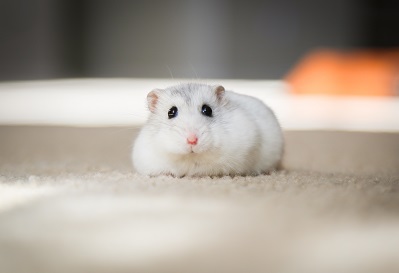Providing a comfortable and enriching environment is crucial for the health and well-being of your beloved hamster. Crafting a cozy hamster cage can contribute to their happiness and longevity.
This step-by-step guide outlines the essential elements and considerations to make your hamster’s habitat a safe and comfortable haven.

Steps
In this part, we will talk about 9 steps for creating a comfortable hamster cage. You can follow them to craft a warm home for your beloved pet.
Step 1: Choose the Right Cage
Start by selecting a suitable cage with ample space for your hamster to move around, play, and explore. Look for a cage with a minimum floor space of 360 square inches (about 2320 square centimeters) and consider multi-level options to add vertical space.
Ensure the cage is made of non-toxic materials and has appropriate bar spacing to prevent escape.
Step 2: Bedding and Nesting Material
Select a safe and comfortable bedding material for your hamster’s cage. Aspen shavings, paper-based bedding, or hemp bedding are excellent choices. Avoid cedar and pine shavings, as they can be harmful to hamsters’ respiratory systems.
Add nesting material such as unscented toilet paper or tissue, providing your hamster a cozy spot to rest and sleep.
Step 3: Hideouts and Shelters
Include hideouts and shelters to create a sense of security for your hamster. These can be store-bought hideaways or DIY structures using cardboard or wooden boxes with entrances and exits.
Ensure they are sturdy and have no sharp edges to prevent any injuries.
Step 4: Exercise Wheel
An exercise wheel is an essential addition to your hamster’s cage. Choose a solid surface, an appropriately sized wheel to prevent injury to their feet.
A silent or noise-reduced wheel is preferable to avoid disturbances during the night.
Step 5: Climbing and Exploration
Provide your hamster with opportunities to climb and explore. Add tunnels, ropes, and platforms to enhance their environment and stimulate their natural instincts.
Make sure all climbing accessories are securely attached to avoid accidental falls.
Step 6: Food and Water Stations
Position food and water containers in easily accessible areas of the cage. Use ceramic or stainless steel bowls for durability and stability.
Fresh water should always be available, and food dishes should be kept clean to prevent contamination.
Step 7: Chew Toys
Hamsters have continuously growing teeth and require appropriate chew toys to keep them in check. Offer wooden or safe plastic chew toys to satisfy their gnawing instincts and prevent dental issues.
Step 8: Regular Cleaning and Maintenance
Maintaining a clean cage is essential for your hamster’s health. Spot-clean the cage daily, removing soiled bedding and uneaten food. Perform a full cage clean-up every 1-2 weeks, washing the cage and accessories with mild soap and water.
Rinse thoroughly and ensure everything is completely dry before reassembling the cage.
Step 9: Temperature and Lighting
Keep the cage in a draft-free area, away from direct sunlight and extreme temperatures. Hamsters are sensitive to temperature changes, so maintaining a constant, comfortable room temperature is vital.

Conclusion
Creating a comfortable hamster cage involves careful consideration of your pet’s needs and natural behaviors. A well-designed habitat with ample space, cozy bedding, appropriate accessories, and regular maintenance will provide a safe and comfortable environment for your hamster to thrive.
By following this step-by-step guide, you can ensure that your furry friend enjoys a happy and healthy life in its cozy home.
 Belinda
Belinda